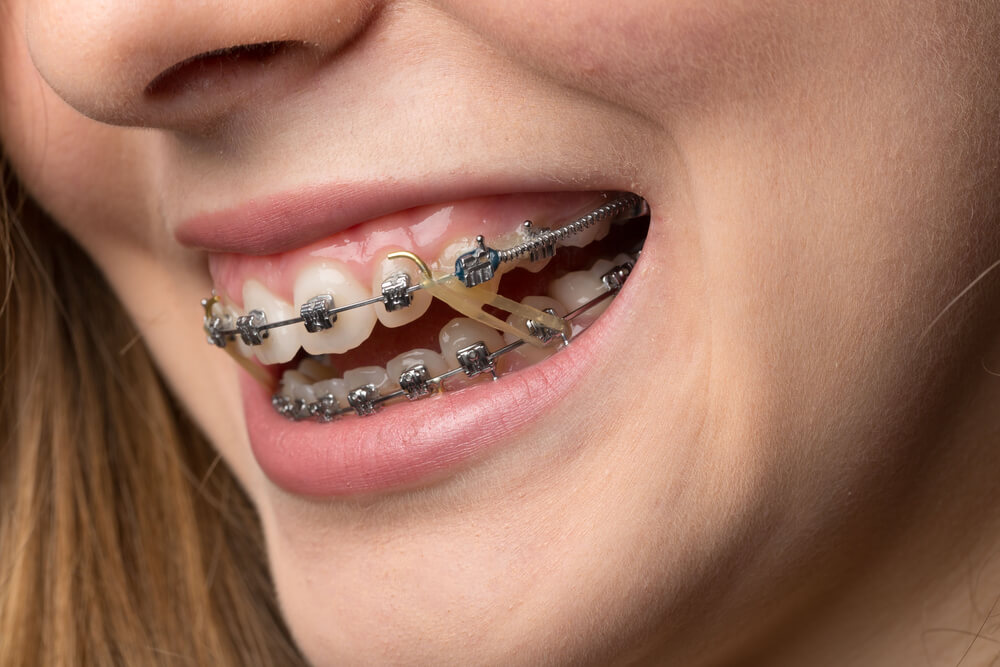Overbites and underbites are among the most common dental alignment issues. But what are the differences between an overbite vs. underbite? Though both significantly impact a person’s oral health and appearance, there are some key differences. Here’s an overview of the characteristics of both overbites and underbites, their causes, treatment options and the potential long-term effects if left untreated.
What Is an Overbite?
An overbite occurs when the upper front teeth excessively overlap the lower front teeth. This condition is quite common, but the severity can vary. In a normal bite, there is a slight overlap of the upper teeth over the lower teeth; however, when the overlap is more pronounced, it is classified as an overbite.
The causes of overbites can range from genetic factors to certain childhood habits, such as prolonged thumb-sucking, excessive pacifier use or nail-biting. These behaviors, particularly when they continue beyond early childhood, can affect the alignment of the teeth and jaw as they develop.
Signs of an overbite include difficulty in closing the mouth comfortably, excessive wear on the lower teeth and even challenges with speech. Left untreated, an overbite can lead to a host of oral health problems.
What Is an Underbite?
In contrast to an overbite, an underbite is when the lower front teeth extend past the upper front teeth. This misalignment gives the jaw a more protruded appearance and can sometimes result in what is known as a “bulldog” facial profile.
Like overbites, underbites are often inherited but can also develop due to childhood habits, such as prolonged thumb-sucking or tongue-thrusting. Skeletal factors, like a disproportionate growth of the lower jaw, are also significant contributors to the development of an underbite.
The symptoms of an underbite can be more noticeable compared to an overbite. They include difficulties with chewing, frequent biting of the inner cheeks and challenges in pronouncing certain sounds. Moreover, the condition can lead to uneven wear of the teeth, chronic jaw pain and an increased risk of temporomandibular joint (TMJ) disorders.
Comparing Underbites vs. Overbites
While both overbites and underbites are forms of malocclusion (misalignment of teeth), they manifest differently and require tailored approaches for correction. The primary difference lies in the direction in which the jaw misalignment occurs. In an overbite, the upper jaw extends too far forward, whereas in an underbite, the lower jaw protrudes too far outward.
Facial structure plays a significant role in how these conditions are perceived. An overbite often leads to a more rounded face, while an underbite can give the lower jaw a more prominent, square appearance.
The severity of each condition also varies, ranging from minor, where the misalignment is barely noticeable, to severe cases that require extensive intervention. There is a common misconception that overbites and underbites are purely cosmetic issues. While appearance is a significant concern for many, the real problems lie in the potential for long-term damage to the teeth, gums and jaw joints if these conditions are left untreated.
Treatment Options for Overbite vs. Underbite

There are many overbite and underbite treatments available. The best type of treatment often depends on the severity of the misalignment, the age of the patient and the overall dental health of the individual. To ensure successful treatment, it’s important to carefully select the best type of treatment for your particular case.
For mild to moderate cases, orthodontic appliances like braces or clear aligners are commonly used. These devices work by gradually shifting the teeth into their correct positions over time. Retainers are often used after initial treatment to maintain the results.
For severe cases, particularly when the jaw structure is significantly affected, surgery may be necessary. Orthognathic surgery is a procedure that involves repositioning the jawbones to achieve proper alignment. This type of surgery is typically recommended only when orthodontic treatment alone is insufficient.
Early intervention is often the key to effective treatment, especially in children and teenagers whose jaws are still developing. Catching these issues early can help avoid more invasive procedures later in life. Adults can also benefit from treatment, but it may require a combination of orthodontic devices and surgical intervention to achieve the desired outcome. Consulting with an orthodontist is key to determining the best treatment plan tailored to the individual’s needs.
Long-Term Impacts If Left Untreated
Failing to treat overbites and underbites can lead to significant long-term oral health problems. Excessive tooth wear is a common issue, which can lead to tooth decay, gum disease and even tooth loss. Additionally, the strain placed on the jaw joints from misalignment can result in TMJ disorders, which are characterized by chronic pain, headaches and difficulty moving the jaw.
Moreover, untreated bite issues can significantly impact daily life. Bite issues can make chewing difficult, leading to poor nutrition. They can also impact speech. Due to the aesthetic appearance of overbites and underbites, impacted individuals may suffer from self-esteem issues.
Early detection and treatment are key. If you notice that you may have an overbite or underbite, it’s important that you speak with an orthodontist as soon as possible to identify the best course of action. An orthodontist can evaluate your case, properly diagnose your condition and help you understand and explore all your treatment options.
Let Peterson Family Ortho Help You With Overbite vs. Underbite
Both overbites and underbites are more than just cosmetic concerns; they are conditions that can have wide-reaching effects on your well-being. Understanding the differences between an overbite vs. an underbite and seeking early treatment are key to preventing long-term health issues.
If you’re looking to treat an overbite vs. underbite, contact us at Peterson Family Orthodontics. We’re here to help you achieve the smile of your dreams!

